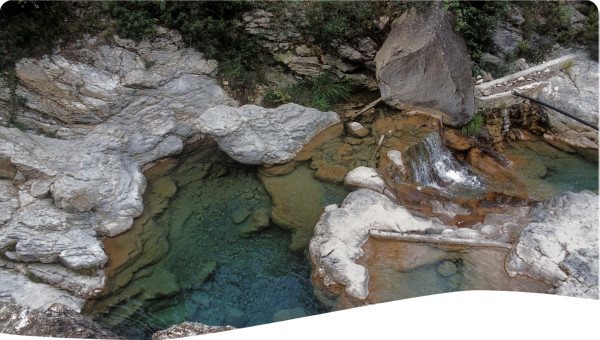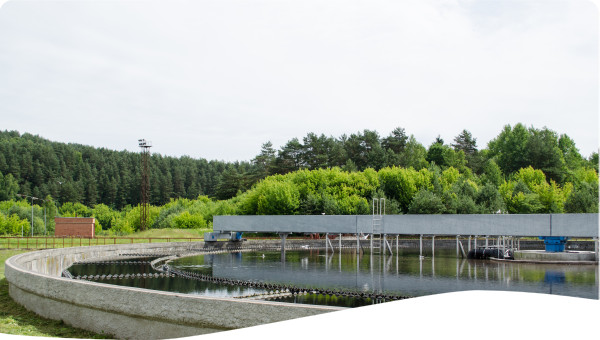Astien groundwater aquifer has been subjected to over-use due to good water quality and over-extraction. To address this, SMETA, a syndicate of local authorities, was established to organise the management of the aquifer. Key lesson learnt is that an organisation like SMETA can prove to be a successful forum for groundwater protection.
Astien groundwater forms part of a confined aquifer which plays an essential role in the economic development of the Béziers region (180,000 inhabitants, which increases to 300,000 in the tourist season). The aquifer is used intensively as 75% of the groundwater abstracted is used for drinking water of which half is consumed between June and August due to the tourist population. Economic activity in the region is carried out in geographically distinct areas, with tourism in the littoral area and agriculture on the plain.
A combination of factors led to the uncontrolled development of the groundwater, namely the artesian nature or groundwater aquifer, the good quality of the pumped water and the abstraction rate in many boreholes is more than 100 m³/h. Furthermore, At one stage, there were more than 600 boreholes in operation at the aquifer.
The overuse of the aquifer in the coastal area has led to a decrease in the water table since the beginning of the eighties, with depressions reaching 20 metres below sea level and 1 to 2 metres below sea level in winter. This situation could lead to irreversible salt pollution of the aquifer, either by the overlying aquifers or by saltwater intrusion. The future of this aquifer was endangered, by its deteriorating water quality, as a direct result of over-abstraction. A comprehensive management policy has been advocated for this aquifer.
Since the 1970s several initiatives have been taken to aid for managing the aquifer which includes data collection by establishing points for piezometric measurements, conducting numerical modeling for the aquifer, inventorying boreholes and estimating water extraction.
In 1990, SMETA (a mixed syndicate of local authorities) was established to organise the management of the aquifer. This platform prevails in the objective of managing the aquifer as a communal asset and has led to a harmonized plan for the management of the aquifer. The plan was unanimously approved and defined the actions to be carried out over the next five years while also identifying the parties involved and guaranteeing financing plans adapted to each operation. Key themes of the plan were quantitative management of the aquifer, preservation of water quality, water saving, leadership and information and monitoring. To support these areas, a part-time hydrogeologist and groundwater technician was hired, diagnostic studies of potable water network to search for leaks, raising awareness through distribution of documents such as signposts and guides.
SMETA continued to conduct quantitative studies such as updating inventory of bore holes, installing permanent modern piezometrial equipment for continuous monitoring and designing a new hydrodynamic simulation model that extends into the sea.
The structure of SMETA offers the possibility of dialogue between all the public authorities, local authorities and water users. Member communities or local administration regularly consults SMETA about renewing campsite permits and drilling new boreholes. About 700 boreholes were documented in 1999. This inventory, however, is not an exhaustive one, as many private family boreholes have not been registered, especially in the north where the aquifer is easily accessible.
The aquifer is now managed as part of the natural heritage – through the knowledge acquired about the aquifer, the simulation models available and the existence of a coherent structure for coordinating the work. The studies also led to linking communities with alternative water resources to reduce the pressure on Astian aquifer while also rehabilitating and filling in abandoned public bore holes.
The management approach balances water abstracted from different available resources and guard against increases in salt content of groundwater and while also managing the use of the aquifer in the sectors that are least vulnerable to saltwater intrusion within the limits of its available capacity. Overall, there has been an improvement of conditions for abstracting water (in some communities) and an indication of the state of the network through water analyses (170 private and public bore holes) which supports managing the aquifer in the future.
Nevertheless, technical, legal, and administrative difficulties have been encountered. Despite considerable results that have reduced the degradation of the resource on the coast, the threat of irreversible damage is still present because of a lack of management planning for all the alternative resources in the area and because of poor economic management of the aquifer.
The poor control of existing and potential private bore holes makes it difficult to implement perennial protection of the aquifer against pollution by the overlying aquifers. This is due to the absence of regulatory provisions for small bore holes (less than 8m³/h) and the inalienable right of private property which poses a problem because of French law that slows down the initiatives for improving the quality of the bore holes. In addition to this, the financial management of the aquifer is not yet satisfactory. Considering these factors, and with the objective of continuing the work achieved so far, prospects for the evolution of integrated management will have to be re-examined in consultation with all the users. The case illustrates the difficulties in developing sustainable programmes for integrated resource management
The first five years of the Plan have allowed the creation of a technical and political structure to manage the aquifer by undertaking action in all the areas of work defined at the signing of the Plan.
The case illustrates a good example of a groundwater management contract (16 million Francs) between the Water Agency and the local authorities, which defined the management rules between the State and the stakeholders.
Financial management of the aquifer is equally important along with quantitative management of the aquifer.
 Case studies
Case studies
